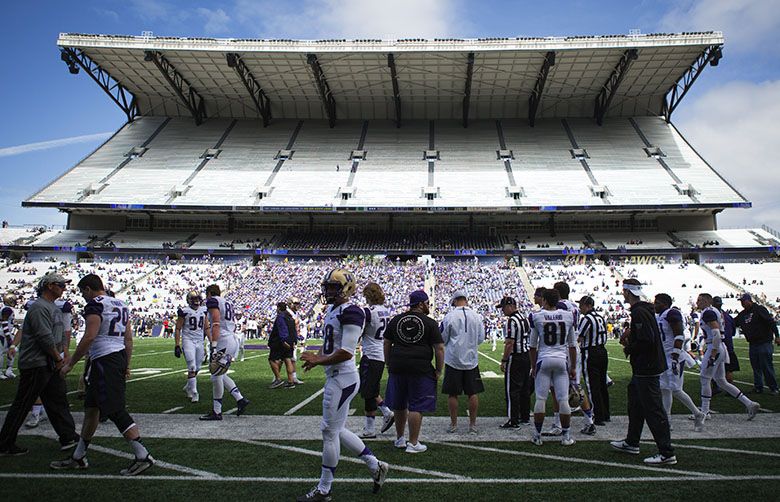With an NFL prospect and a secret weapon in the mix, the tight ends figure to develop into a position of strength for the UW offense this year.
The anticipation for this Washington football season is as robust as its been since Marques Tuiasosopo’s senior season in 2000. As the Huskies get closer to kicking off fall camp on Aug. 8 — less than four weeks before the Sept. 3 opener vs. Rutgers — we continue our annual primer on each position. Today: Tight ends.
Projected depth chart:
Darrell Daniels, sr., 6-4, 237
Drew Sample, so., 6-5, 260
Jeff Lindquist, sr., 6-3, 244
David Ajamu, jr., 6-5, 246
Will Dissly, jr., 6-4, 273
Michael Neal, rs-fr, 6-4, 237
Derek Hunter, jr. 6-2, 227*
*denotes walk-on
2015 review: Senior Joshua Perkins emerged as Jake Browning’s favorite target while putting together one of UW’s more productive seasons by a tight end, finishing second on the team with 36 catches for 539 yards. His 15.0 yards per reception led the team (among receivers with at least 10 catches) and his three touchdown catches tied for the team lead. His 36 catches were fourth-most by a tight in a season at UW. Darrell Daniels added 19 catches for 250 yards and one TD, and youngsters Drew Sample and David Ajamu got their first significant action for the Huskies.
2016 outlook: One could look at Perkins’ production from last fall and have trepidation about replacing it. Fear not. The Huskies are deep and versatile here. Daniels came to UW as a wide receiver before switching to tight end, and he thinks of himself as a hybrid. He’s an intriguing NFL prospect, with still a lot of untapped potential. He’s been (hand) timed in the 4.4-second range in the 40-yard dash, and he’s up to about 250 pounds this summer. He’s worked hard to improve his hands, an area of concern early in his career, and he’s become someone Chris Petersen looks to as a leader on offense. Could be a big year for Daniels. (Also, if you missed it this spring, Daniels participated in a fun feature for The Times’ Pacific NW Magazine about uniforms and identity.)
The Huskies regularly feature two (and sometimes three) tight ends in their offense, meaning Sample and Ajamu (before his injury) were on the field often in different packages. Sample started eight games as a redshirt freshman, used mostly as a blocker — though he made of the most of his five catches, two of which went for TDs. Probably not a guy who will ever get a ton of attention, because what he does isn’t all that glamorous, but he’ll continue to be an important piece of the offense. Ajamu is a bit of a wild card. He was playing well early in the season, earning two starts, before tearing his ACL during pregame warmups at USC in early October. Now a junior, he’s still looking for his first reception.
Will be interesting to see how Jeff Lindquist, a team captain, is incorporated into the offense at a new position. Lindquist, now a senior, lost out in a three-man QB battle last fall and switched to tight end in the spring — though it might be more accurate to think of him as an H-back or even fullback. Coaches have long lauded Lindquist’s leadership and toughness. It’s unclear how much, if at all, they’ll use the Lindquist Wildcat package they favored at times last year, particularly on the goal line … which produced mixed results. Regardless, Lindquist adds a wrinkle in the backfield for which defensive coordinators will have to take note.
Similarly, Will Dissly shifted over from the defensive line in the spring and he adds quality depth on offense. Michael Neal, coming off his redshirt season, flashed some of his potential in limited action this spring. (Note: Jacob Kizer, the lone tight end signed in February’s recruiting class, is expected to grayshirt this year.) Overall, it’s fair to expect that this could develop into a position of strength for the offense.

